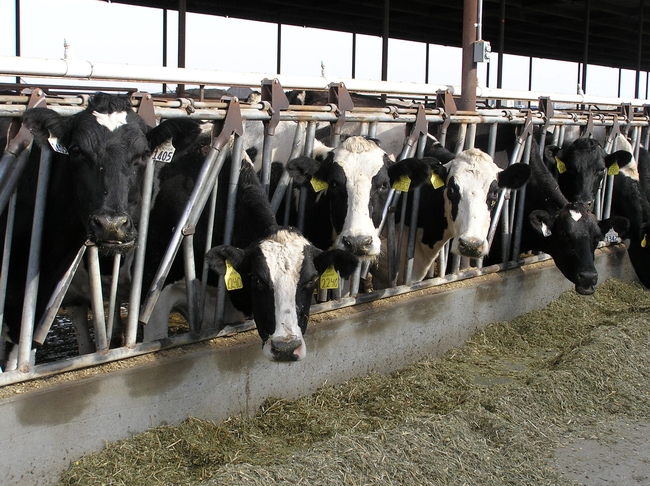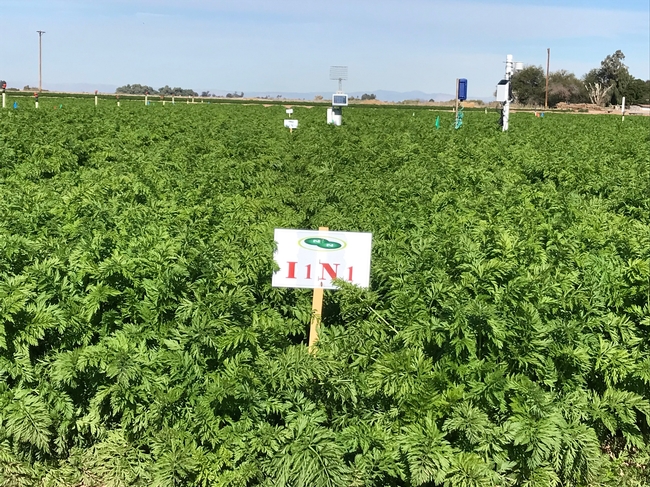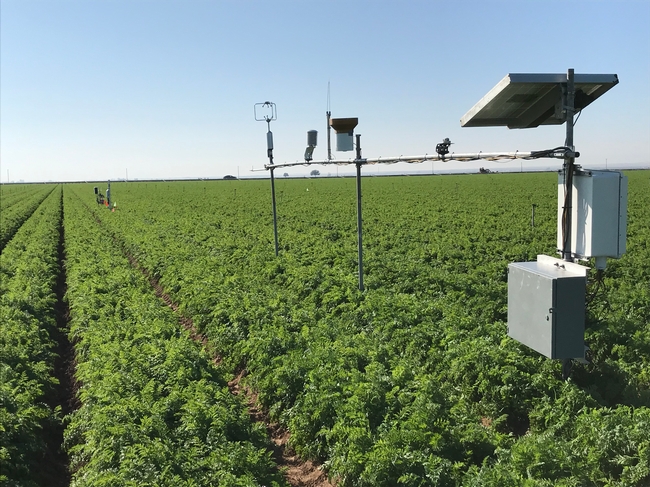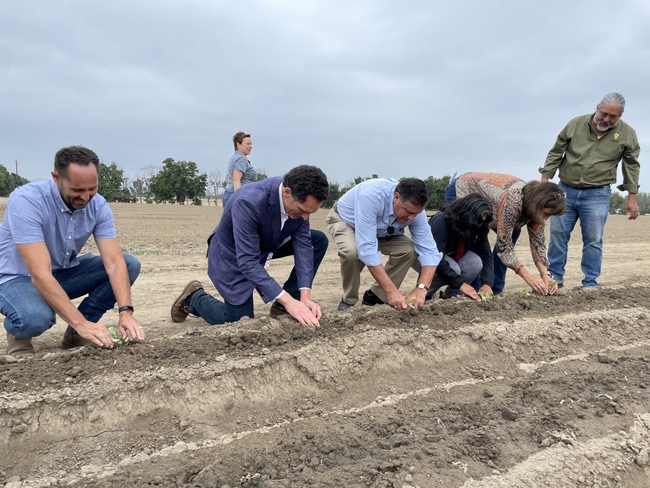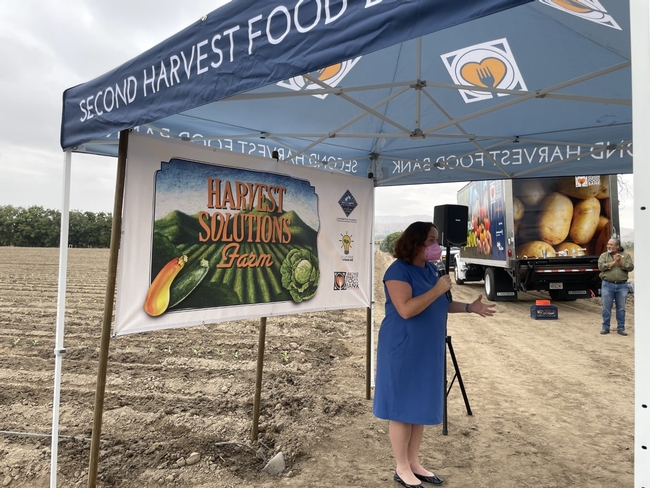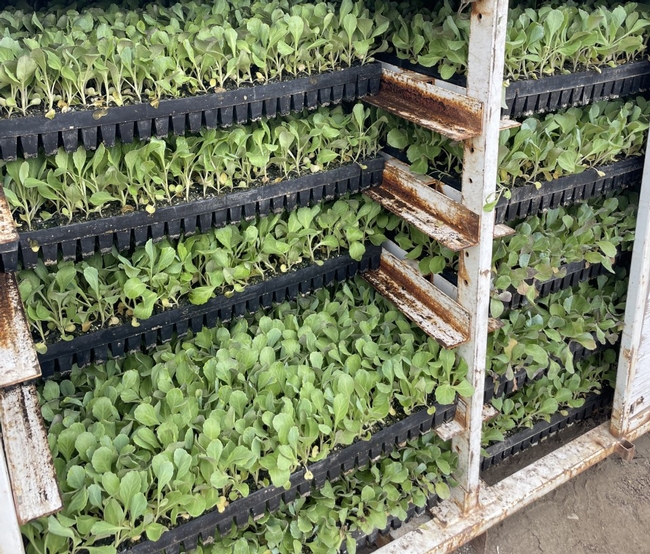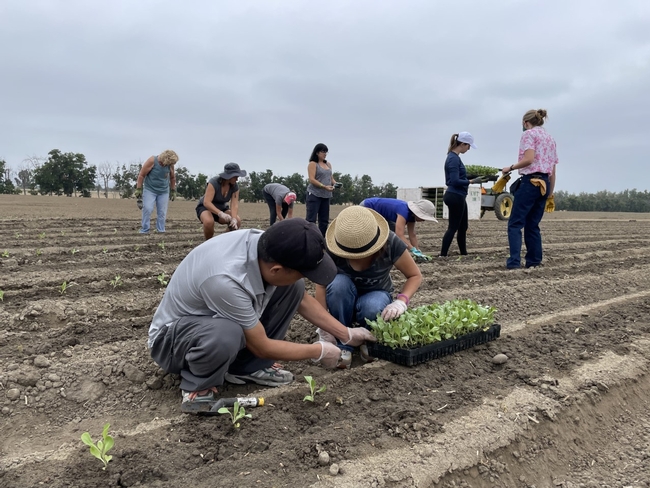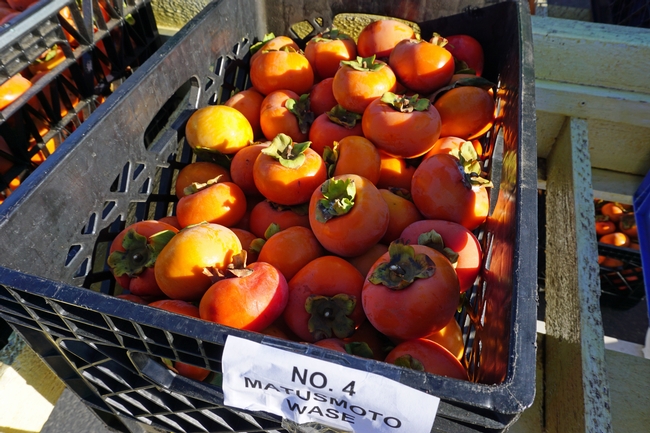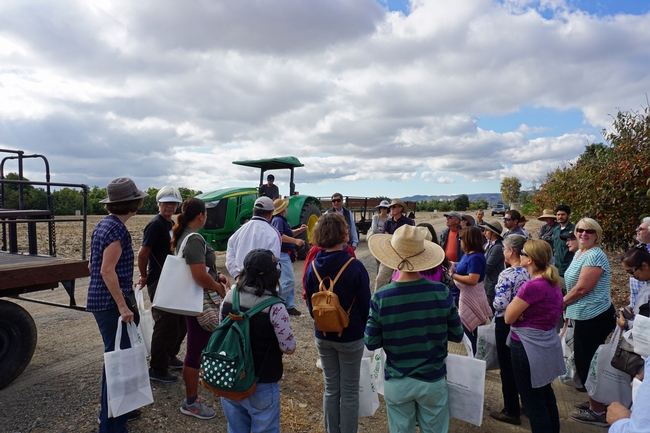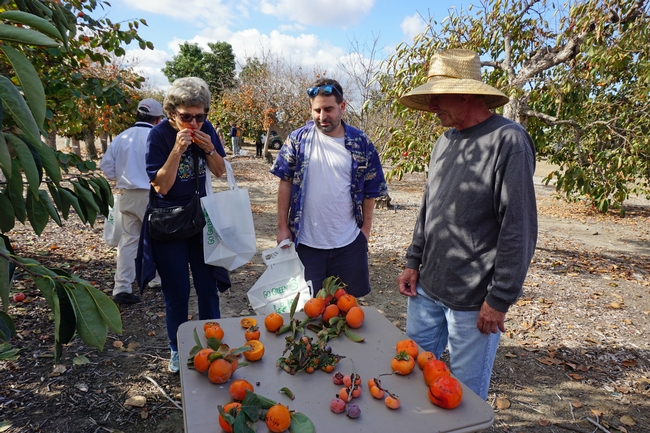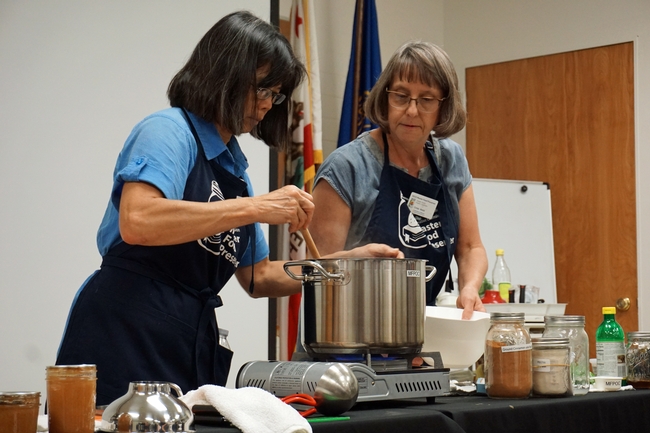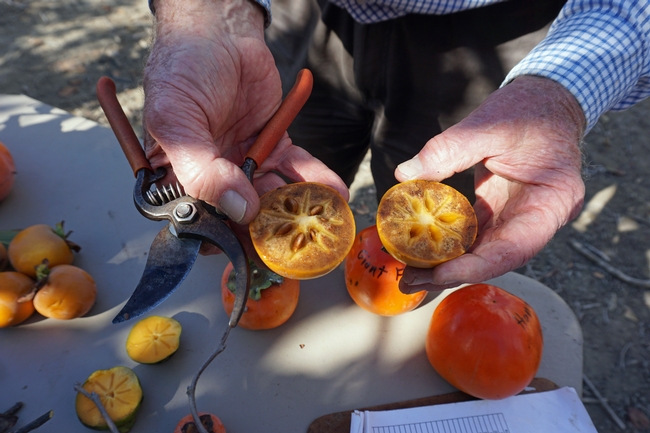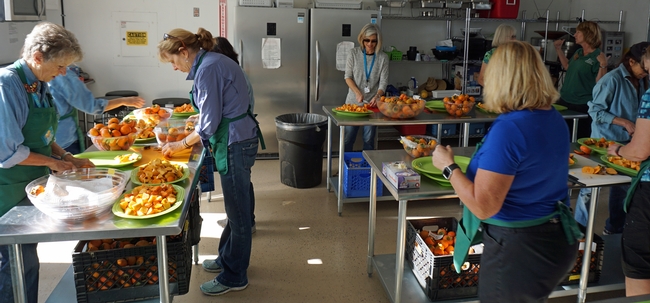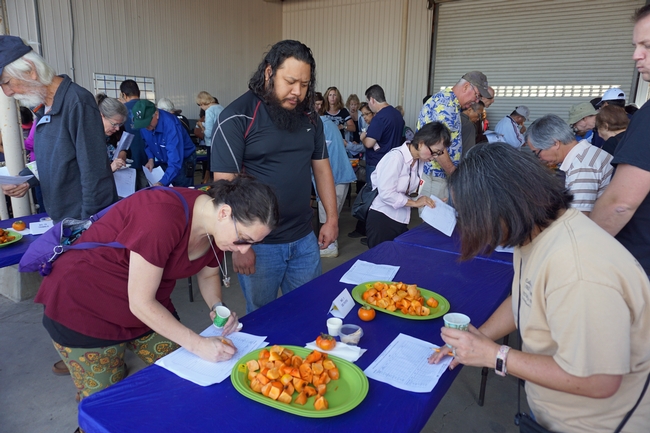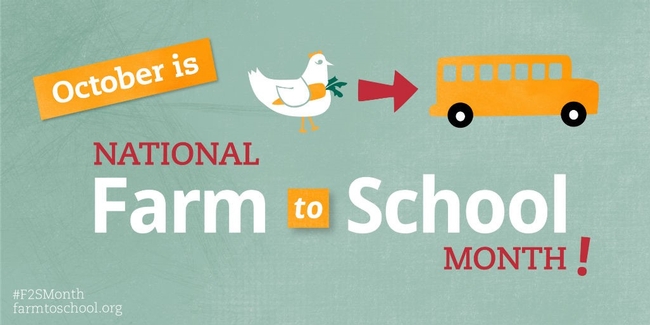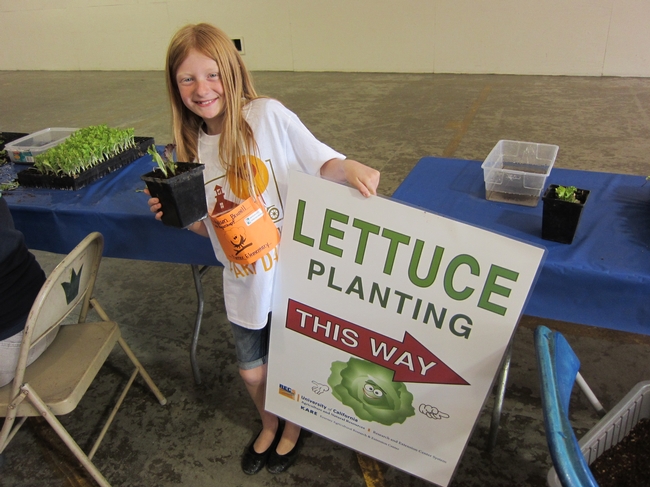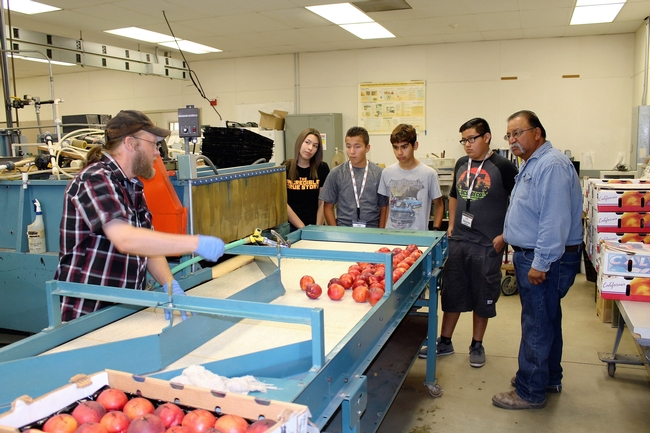Posts Tagged: Research and Extension
UC ANR offers seminars, citrus tour at World Ag Expo
UC Dairy Series
A series of dairy seminars will be offered by UC Agriculture and Natural Resources scientists at the World Ag Expo. Presentations will cover the latest research on almond hulls as dairy feed, water management, nutrient management, manure management and much more. See the schedule below.
Tuesday, Feb. 8, 2022
Seminar Trailer 2
Session 1: Nutrient Management & Manure Treatment Technologies
Tuesday, 1:00 – 1:55 p.m.
1 p.m. – Joy Hollingsworth, UC Cooperative Extension nutrient management and soil quality advisor for Tulare, Kings, Fresno and Madera counties
Nutrient management with digester effluent
1:15 p.m. – Anthony Fulford, Ph.D., UC Cooperative Extension nutrient management and soil quality advisor for Stanislaus, Merced and San Joaquin counties
Incorporating vacuumed manure into your nutrient management needs
1:30 p.m. – Nick Clark, UC Cooperative Extension agronomic cropping systems and nutrient management advisor for Kings, Fresno and Tulare counties
Nutrient management with other advanced treatment technologies
1:45–1:55 p.m. – Q&A session
Session 2: Manure management options on your dairy
2–2:55 p.m.
2 p.m. – Betsy Karle, UC Cooperative Extension dairy advisor for Glenn, Butte, Tehama,
Shasta, Sutter and Yuba counties
CDFA's Alternative Manure Management Program - where to start
2:15 p.m. – Frank Mitloehner, Ph.D., UC Cooperative Extension specialist in livestock systems and air quality, UC Davis Department of Animal Science
Manure technologies & pre/post greenhouse gas emissions
2:30 p.m. – Ruihong Zhang, Ph.D., UC Davis professor in the Department of Biological & Agricultural Engineering
Novel technologies for manure management on dairies
2:45–2:55 p.m. – Q&A session
Wednesday, Feb. 9, 2022
Seminar Trailer 2
Session 3: Feeding the California Dairy Herd
1–1:55 p.m.
1 p.m. – Jennifer Heguy, UC Cooperative Extension dairy advisor for Stanislaus, Merced and San Joaquin counties
Almond hull usage on California dairies
1:15 p.m. – Ed DePeters, Ph.D., UC Davis professor in the Department of Animal Science
Almond hulls - the story continues
1:30 p.m. – Dan Putnam, Ph.D., UC Cooperative Extension specialist in the UC Davis Department of Plant Sciences
Low lignin alfalfa considerations for yield & feed quality
1:45–1:55 p.m. – Q&A session
Session 4: Water-wise dairying
2–2:55 p.m.
2 p.m. – Nick Clark, UC Cooperative Extension agronomic cropping systems and nutrient management advisor for Kings, Fresno and Tulare counties
Sugar beet and safflower – yield, water use and nutrient management considerations
2:15 p.m. – Mark Lundy, Ph.D., UC Cooperative Extension specialist in the UC Davis Department of Plant Sciences
Maximizing water productivity from winter small grains in California
2:30 p.m. – Khaled Bali, Ph.D., UC Cooperative Extension irrigation water management specialist at Kearney Agricultural Research and Extension Center
Deficit irrigation and winter groundwater recharge in alfalfa
2:45–2:55 p.m. – Q&A session
Need continuing education unit credits?
American Registry of Professional Animal Scientists (ARPAS): 1 CEU/session; 4 total available
Certified Crop Adviser: 2 CEU available
Nutrient Management: 1 CEU (Sessions 1 & 2)
Soil & Water Management: 1 CEU (Session 4)
California Department of Food and Agriculture's Irrigation and Nitrogen Management Program: 2 CEU available
Nitrogen Management: 1 CEU (Sessions 1 & 2)
Irrigation Management: 1 CEU (Session 4)
Feb. 10 citrus tour (9:30 a.m.–3:30 p.m.)
The citrus tour will visit two locations: University of California Lindcove Research & Extension Center and McKellar Family Farms.
Established in 1959, the UC Lindcove REC has more than 100 acres of citrus in the heart of the San Joaquin Valley. At the center, researchers conduct studies on citrus varieties, horticultural techniques and pest management. The UC Lindcove REC portion of the tour will include a display and tasting of citrus varieties.
Lunch is provided at McKellar Family Farms, where visitors will tour the citrus orchards, view equipment and get a better understanding of the process from tree to table. By the end of the tour, visitors will have an understanding of how much care and forethought goes into producing top-quality fruit, in addition to the research conducted to improve growing conditions.
Tour tickets cost $45 and include choice of lunch. For more information, visit https://www.worldagexpo.com/attendees/agriculture-tours.
New research fills gap on best practices for California carrot production
One doesn't need to be a seasoned farmer to know that growing conditions in Canada are completely different than those found in the low desert of California.
And yet, for many years, studies conducted in Canada were used to generate nitrogen uptake data for the California carrot production system, so growers managed their fields based on their own experiences – and that research conducted thousands of miles to the north.
Carrots had been among the crops grown in California that did not have site-specific data to suggest the best source, rate, timing and placement of nitrogen, in the highly variable cropping seasons and locations throughout the state. That's why new information – based on local research and published in August – is invaluable to farmers in Imperial and Kern counties, where the majority of the carrots in California are grown.
Two years of data from two experimental trials at UC Agriculture and Natural Resource's Desert Research and Extension Center – as well as from 10 commercial fields – produced key recommendations for farmers to make the most of their irrigation and nitrogen applications.
“The point is we developed information in your field, based on your practices, your climate, your production system – and this is what is really happening,” said Ali Montazar, UC Cooperative Extension irrigation and water management advisor for Imperial County. Montazar conducted the study alongside Daniel Geisseler, UCCE nutrient management specialist at UC Davis, and Michael Cahn, UCCE irrigation and water resources advisor for Monterey County.
With reliable data gathered under real-world conditions, Montazar said growers now have solid reference points for when – and at what rate – to irrigate and apply fertilizers in the low desert environment. One of the key findings, for example, was that the carrots' nitrogen uptake is generally low in the first 40 to 50 days, so growers are advised to limit their fertilizer application during that period.
Then, by tailoring those basic guidelines to their own site-specific situation and optimizing their practices, growers can maximize the amount of nitrogen taken up by the carrots – and minimize the amount that is leached out.
“Improving irrigation and nutrient management in the desert production system is what local growers are themselves trying to achieve. With improving efficiency and reducing nutrient leaching, we can improve the quality of water in the Salton Sea,” said Montazar, noting the longstanding challenges of reducing contaminants from irrigated lands to protect its unique ecosystem and wildlife.
While contamination of groundwater is not a critical issue in the desert, the best practices in this study can also help carrot growers in parts of California where nitrogen leaching into groundwater and drinking water supplies is a greater concern.
Montazar is currently leading a team in studying carrot-growing management practices under slightly different conditions in Kern County, with the hopes of publishing findings in late summer 2022.
The Imperial County study, “Spatial Variability of Nitrogen Uptake and Net Removal and Actual Evapotranspiration in the California Desert Carrot Production System,” is published in the journal Agriculture, and can be found at https://doi.org/10.3390/agriculture11080752. Findings and recommendations also appear in Progressive Crop Consultant: https://progressivecrop.com/2021/09/new-knowledge-based-information-developed-to-enhance-water-and-nitrogen-use-efficiency-in-desert-fresh-market-carrots/.
Funding for this study was provided by the California Department of Food and Agriculture's Fertilizer Research and Education Program, as well as the California Fresh Carrots Advisory Board.
To grow vegetables locally, Second Harvest partners with UC South Coast REC
Partnering for California
A.G. Kawamura to grow produce at UC South Coast Research and Extension Center for Orange County food bank
Driven to provide consistent access to nutritious food for residents in Orange County, Second Harvest Food Bank is exploring new fields of possibility – fields amounting to 45 acres at the University of California Agriculture and Natural Resources' South Coast Research and Extension Center in Irvine.
With grower A.G. Kawamura, Solutions for Urban Ag chairman and former California secretary of Food and Agriculture, the food bank recently planted its first cabbage transplants to generate a steady flow of fresh, locally grown produce for its pantry network.
Harvest Solutions Farm is expected to produce 40,000 pounds of cabbage per week as of Nov. 18 when the first harvest is expected to take place. When all 45 acres are fully planted, they are anticipated to yield 160,000 pounds of produce per month.
“Fresh produce is so important to the health of a community,” said Darren Haver, director of the agricultural research facility. “Through this unique public-private partnership, UC South Coast Research and Extension Center is able to provide land and volunteers to assist in planting and harvesting to supply nutritious food to people in our community in need.”
On Aug. 31, Second Harvest Board Chairman Dave Coffaro, Kawamura and Haver were joined at UC South Coast REC by Irvine Mayor Farrah Khan, Representative Katie Porter of Irvine and Orange County Supervisor Don Wagner for the ceremonial planting of the first crop. Volunteers transplanted approximately 26,000 cabbage seedlings.
“This is a historic day for Second Harvest Food Bank of Orange County,” said Coffaro. “Few food banks, if any, have attempted to grow their own food on this large a scale. Our unique good fortune to have access to 45 acres in the heart of an urban center like Irvine, where we are able to cultivate an array of crops and supply our food pantry partners with fresh, nutritious produce brings us a huge step closer to making nutritional security a reality for our entire community.”
Produce key component of Second Harvest's nutritional strategy
Harvest Solutions Farm is the latest component in Second Harvest's strategy to attain nutrition security for all. The food bank has begun focusing on planned nutrition based on consistent access to fresh protein, produce and dairy – rather than relying on situational nutrition driven solely by donations.
Second Harvest is prioritizing the weekly purchase and donation of nutritious food to provide children and families with consistent access to the nutrient-dense food that can set them up for success in school and at work. Fresh produce is a key component of a nutritious diet.
“After this initial planting of cabbage, which is a hearty, versatile vegetable that's easy to grow and a nutritional mainstay in a variety of cultures, the second planting in May 2022 will include zucchini, squash and mini bell peppers,” saidKawamura. “When the 45 acres are fully planted with these vegetables, with regular crop rotations, I expect it to yield 600,000 pounds per month, which is comparable to two 53-foot semi-truck trailers full of locally grown produce going into the community.”
Creating supply chain resiliency and environmental benefits
The farm also allows Second Harvest to mitigate challenges like pandemic-induced inflated food prices and supply chain disruptions.
“We previously bought vegetables from the Central Valley. Last year, we had to work around lags in the supply chain, which means healthy food was less plentiful for Orange County families in need,” Coffaro said. “This farm will create an end-to-end produce supply chain for us and those we serve.”
Further, by growing produce locally, Second Harvest will drastically cut its “time to the dinner plate,” delivering greater health benefits because the produce will be fresher when it reaches families.
The farm will be maintained primarily by 40 volunteers during three-hour shifts, starting with one to two scheduled opportunities per week. Volunteers must be at least 18 years of age, but opportunities for children to participate will be available in the near future.
Thanksgiving persimmons are autumn joy
When the weather cools in the fall and the holidays draw near, orange orbs ripen on persimmon trees in California to offer a fresh autumn sweetness in time for Thanksgiving recipes and holiday décor.
At the UC South Coast Research and Extension Center (SCREC) in Irvine, a collection of 53 persimmon varieties are at their peak in November when the public is invited for tasting and harvesting at the annual persimmon field day.
“We want to raise awareness about persimmons,” said Tammy Majcherek, SCREC community educator. “It's a beautiful tree and a great addition to any landscape. Persimmon trees provide shade in the summer, healthy fruit in the fall, then drop their leaves and allow the sun's warmth to come through in the winter. It's a win-win situation as far as landscape trees go.”
The persimmon collection came to the research center in the 1960s, when the late UCLA subtropical horticulture professor Art Schroeder arranged to move his collection of persimmon varieties to another venue because the pressure of urban development at the Westwood campus became too great.
Persimmons are native in two parts of the world, China and the United States. The Chinese persimmon made its way to Japan, where its popularity soared. The American persimmon comes from the Southeastern United States, however, most California persimmons trace their lineage to Asia.
California leads the nation in persimmon production, according to the California Department of Agriculture Crop Report, but with a value of about $21 million in 2012, it represents just a small fraction of the state's $19 billion 2012 tree fruit and nut value.
Nevertheless, to the visitors who came out to tour UC's collection at SCREC, persimmon is a choice fruit. Participants on the early-morning VIP tour received a large shopping bag to fill with various varieties of fuyu and hachiya persimmons. Fuyu are flat, yellow-orange fruit that can be eaten right off the tree like apples or allowed to mature to a super-sweet soft pulp. Hachiya are redder, heart-shaped and astringent when not fully ripened. “If you bite it, it will bite your mouth right back,” said one participant.
However, after ripening to a jelly soft pulp or dried, the hachiya is equally delicious.
Shirley Salado, the UC Cooperative Extension Expanded Food and Nutrition Education Program supervisor in San Diego County, attended the persimmon tasting to gather fruit and information for her education program.
“The fuyu is great to eat,” Salado said. “When they ripen and become very soft, you can put the pulp in a blender and then freeze in zipper bags to add to healthy smoothies.”
Salado collected two large bags of persimmons to share with her nutrition education staff.
“Not everybody knows about these,” Salado said. “This gives them a chance to look at the fruit. This is what we promote.”
Following the tour, coordinator of the UC Master Food Preserver program at SCREC Cinda Webb demonstrated safe consumption by making cinnamon persimmon jam, dried persimmon chips, and a gourmet persimmon, basil, beet and rice salad.
Wild or brown rice persimmon salad
4 cups wild or brown rice, cooked
2 Fuyu persimmons, chopped
1 cup cooked, chopped beets
1 cup basic, chopped
8 oz feta cheese
½ cup orange cumin vinaigrette
Vinaigrette (makes about 1 cup)
½ cup orange juice
¼ cup olive oil
2 tsp rice vinegar
1 Tbsp maple syrup
1½ tsp cumin
1 tsp coriander
½ tsp salt
Directions
- Whisk together vinaigrette dressing ingredients
- Stir basil, beets, persimmons and feta into rice and toss with ½ cup vinaigrette.
- Top with persimmon slices and extra chopped basil for presentation.
October is National Farm-to-School Month
Schools across the country are celebrating local connections to local food producers in October during National Farm to School Month. Education and outreach activities such as school gardens, cooking lessons and field trips are teaching students about healthy, local foods and food's journey from the farm to their forks.
There are plenty of opportunities for teachers and schools to celebrate and get involved in National Farm to School Month with the University of California Division of Agriculture and Natural Resources (UC ANR). Here are a few ideas to get you started.
4-H youth development
Launch a 4-H Club at your school. The 4-H Youth Development Program emphasizes enrichment education through inquiry-based learning. Core content areas include Healthy Living as well as Science, Technology, Engineering and Math (STEM). Clubs have access to a wealth of curricula materials exploring food, agriculture and natural resources. 4-H also offers the Ag in the Classroom school enrichment program.
Boots on the ground
Invite UC ANR academics and program staff to your career day or science fair or to make a classroom presentation. Specialists from Master Gardeners, Nutrition Education, Project Learning Tree, California Naturalist and other UC ANR programs know how to engage and inspire your students.
Some programs, including Project Learning Tree, offer "train the trainer" professional development workshops that equip educators with the skills and knowledge to teach concepts in their own classrooms. Project Learning Tree also provides free activity guides to teachers who attend their workshops. The guides highlight differentiated instruction, reading connections, and assessment strategies and offer ideas to integrate technology into classroom instruction,
Research and Extension Centers
Take your students on a field trip to a UC ANR Research and Extension Center (REC). The nine RECs in California are focal points for community participation and for active involvement in current and relevant regional agricultural and natural resource challenges.
Visiting a REC offers students a unique opportunity to learn about food production through the lens of applied science research in plant pathology, integrated pest management, conservation tillage, water conservation, development of new crop varieties, and much more. Some RECs also host extended education programs such as Sustainable You! Summer Camp and FARM SMART.
The 2016 National Farm to School Month theme is One Small Step, which highlights the easy ways anyone can get informed, get involved and take action to advance farm to school in their own communities and across the country.
Each week will have a different focus:
- Education (October 3-7)
- Healthy School Meals (October 10-14)
- Farmers & Producers (October 17-21)
- The Next Generation (October 24-28)
Join the celebrations by signing the One Small Step pledge then take your own small step to support healthy kids, thriving farms and vibrant communities this October by partnering with UC ANR.
This story en español.


